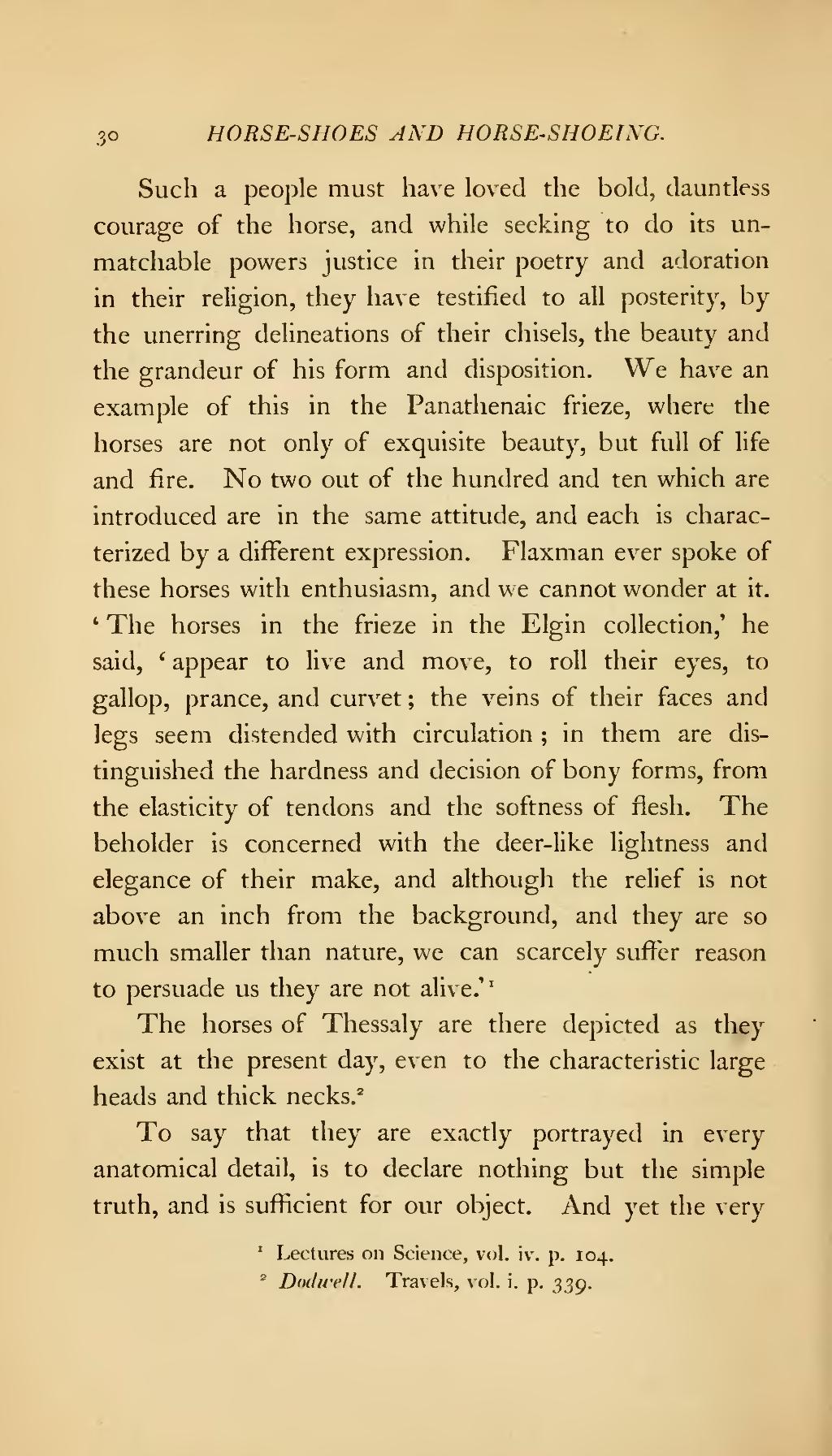Such a people must have loved the bold, dauntless courage of the horse, and while seeking to do its unmatchable powers justice in their poetry and adoration in their religion, they have testified to all posterity, by the unerring delineations of their chisels, the beauty and the grandeur of his form and disposition. We have an example of this in the Panathenaic frieze, where the horses are not only of exquisite beauty, but full of life and fire. No two out of the hundred and ten which are introduced are in the same attitude, and each is characterized by a different expression. Flaxman ever spoke of these horses with enthusiasm, and we cannot wonder at it. ‘The horses in the frieze in the Elgin collection,’ he said, ‘appear to live and move, to roll their eyes, to gallop, prance, and curvet; the veins of their faces and legs seem distended with circulation; in them are distinguished the hardness and decision of bony forms, from the elasticity of tendons and the softness of flesh. The beholder is concerned with the deer-like lightness and elegance of their make, and although the relief is not above an inch from the background, and they are so much smaller than nature, we can scarcely suffer reason to persuade us they are not alive.’[1]
The horses of Thessaly are there depicted as they exist at the present day, even to the characteristic large heads and thick necks.[2]
To say that they are exactly portrayed in every anatomical detail, is to declare nothing but the simple truth, and is sufficient for our object. And yet the very
